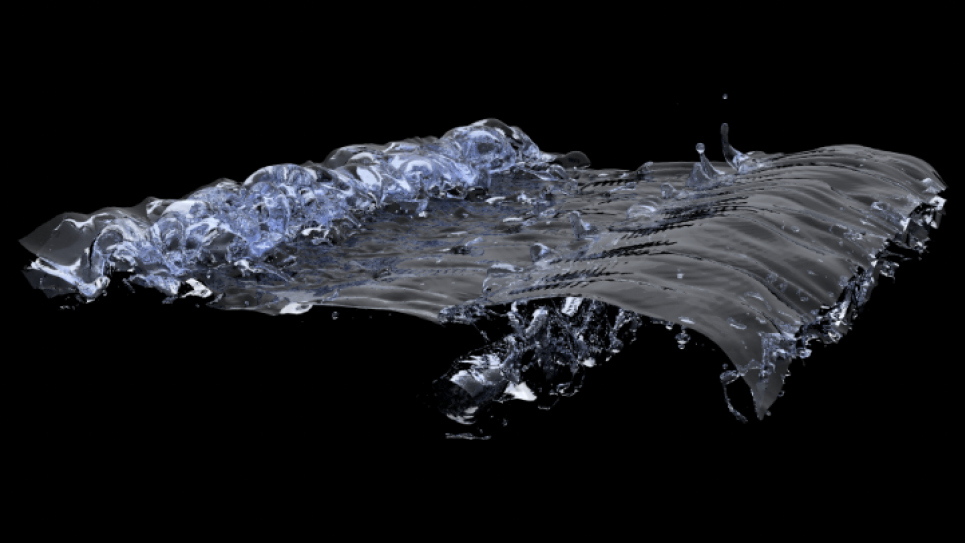
Snapshot from a numerical simulation of a breaking wave (Reynolds number 1.8×105, Webernumber 1.6×103) [31].This simulation was performed on the Mira supercomputer and received a Gallery of Fluid Motion Award by the American Physical Society in 2018.